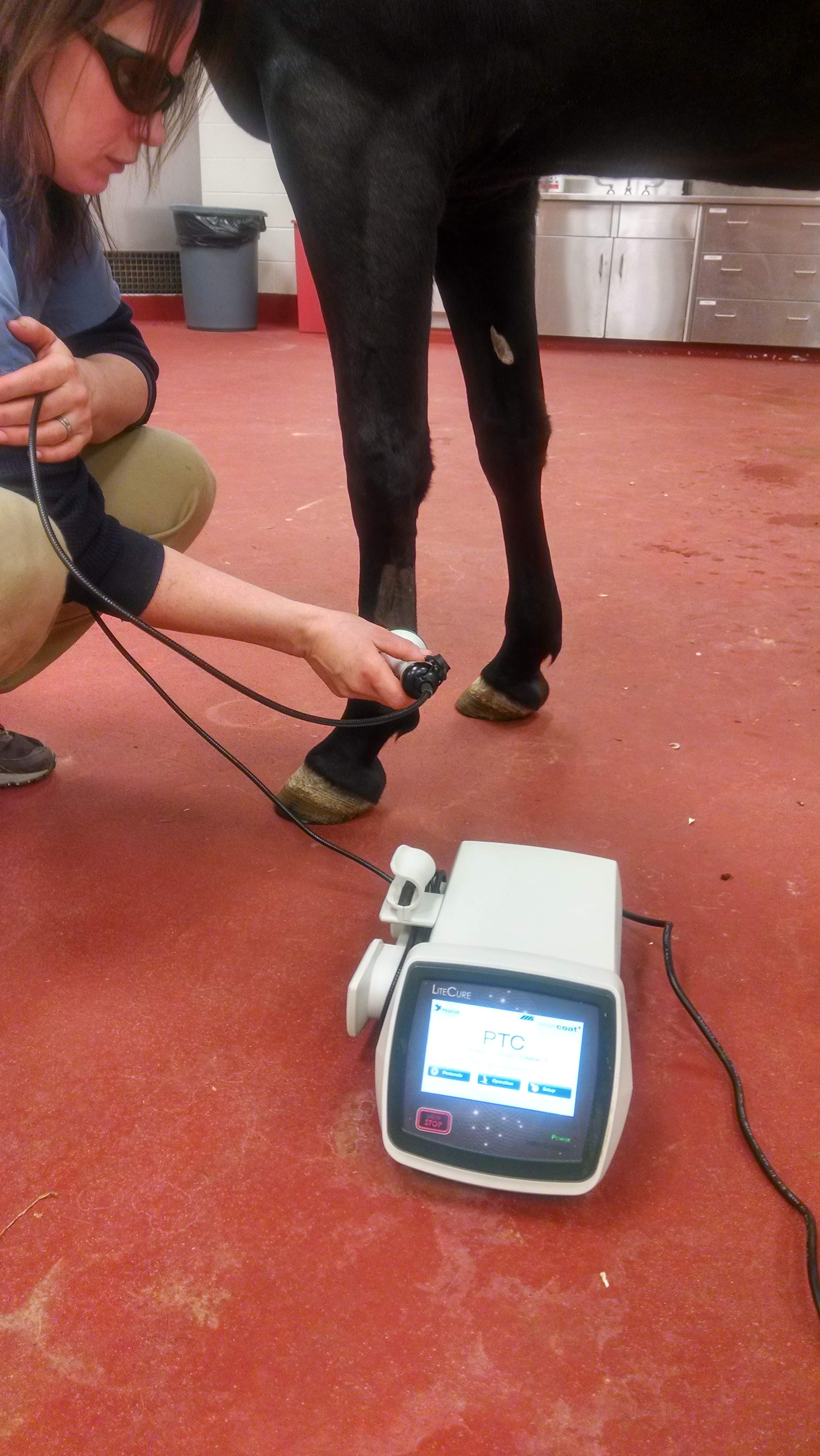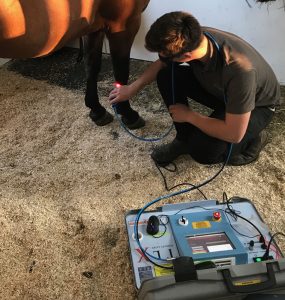Equine Therapy for Kid: Emotional and Behavior Support Explained
Equine Therapy for Kid: Emotional and Behavior Support Explained
Blog Article
Exactly How Laser Treatment in Horse Treatment Is Revolutionizing Vet Care for Equines
Laser treatment has arised as a transformative method in equine veterinary care, supplying a non-invasive solution that accelerates recovery and improves total health. The mobility and adaptability of laser therapy tools further highlight their expanding indispensability among vets.
Understanding Laser Therapy

The modern technology behind laser treatment is based in the concept of photochemistry, where photons are soaked up by chromophores within cells, leading to increased ATP production and modulation of reactive oxygen species (Equine Therapy). This, in turn, promotes cellular proliferation, decreases inflammation, and accelerates healing. Veterinary practitioners utilize different types of lasers, consisting of low-level lasers (LLLT) and high-power Course IV lasers, relying on the details healing objectives and the nature of the equine problem being dealt with
Various laser wavelengths and power setups are meticulously picked to target numerous cells depths and achieve desired clinical outcomes. Safety protocols are critical, as incorrect usage can result in thermal damage or suboptimal therapeutic results. Hence, a comprehensive understanding of laser therapy's mechanisms and applications is important for its effective implementation in equine veterinary technique.
Advantages for Horse Wellness
The myriad benefits of laser therapy for equine health include enhanced recovery, pain decrease, and improved wheelchair. This innovative treatment technique leverages certain wavelengths of light to permeate tissues, promoting cellular feature and advertising rapid tissue repair service. The non-invasive nature of laser treatment guarantees minimal anxiety and pain for the steed, facilitating a smoother recuperation process.
Improved recovery is one of the primary benefits, as laser treatment increases mobile regrowth and collagen synthesis. Pain reduction is accomplished with the anti-inflammatory results of laser treatment, which lowers swelling and lowers the manufacturing of pain-inducing chemicals.
By lowering swelling and pain, and improving tissue repair, laser therapy aids in recovering joint function and muscle flexibility. Hence, laser treatment stands as a transformative device in modern horse vet care.
Common Conditions Dealt With
Laser therapy has actually emerged as a functional treatment alternative for a variety of usual equine conditions. In addition, laser therapy is reliable for conditions like osteo arthritis, where it helps alleviate joint inflammation and promote cells repair work.
Wound monitoring is one more location where laser therapy has revealed significant assurance. Chronic injuries or slow-healing ulcers can be especially tough in horses, yet laser therapy improves cellular regeneration and enhances blood flow, thus quickening the healing process. In addition, laser treatments have been effectively used in managing unguis problems such as laminitis and abscesses, minimizing discomfort and advertising faster healing.

Innovation Behind Laser Treatment
Beyond the myriad conditions treatable with laser treatment, the modern technology itself advantages better assessment. At the heart of laser therapy is the usage of specific wavelengths of light to pass through tissues and elicit biological feedbacks. These wavelengths, normally ranging from 600 to 1000 nanometers, are precisely soaked up by chromophores in the skin, muscular tissue, and various other cells, instigating a cascade of cellular occasions.
Laser tools made use of in veterinary medication typically utilize low-level laser therapy (LLLT) or cool laser therapy. Unlike high-powered medical lasers, these home tools operate at reduced energy levels, enhancing healing benefits while lessening thermal damages. The energy from the laser light boosts adenosine triphosphate (ATP) production, improves cellular metabolic rate, and accelerates cells repair service procedures.

Success Stories and Study

Showcasing the substantial benefits of laser treatment, many success stories and instance research studies illuminate its transformative influence on equine health. One such situation involves a pureblooded racehorse struggling with chronic tendonitis. Conventional therapies generated very little renovation, but after integrating laser treatment into the routine, the equine showed considerable decreases in inflammation and pain within weeks, ultimately returning to competitive auto racing.
An additional engaging instance features a dressage equine diagnosed with extreme neck and back pain, limiting its performance. A veterinary group used low-level laser treatment (LLLT) to target the inflamed locations, leading to marked renovation in versatility and a remarkable decrease in discomfort. Over numerous sessions, the steed reclaimed its peak form, showcasing the effectiveness of laser therapy in resolving bone and joint problems.
Additionally, a research performed at a leading equine facility analyzed 50 equines with various soft cells injuries treated with laser treatment. The results were striking: 85% of the horses demonstrated increased recovery times and enhanced mobility. These situations underscore the adaptability and effectiveness of laser therapy in equine medicine, supplying a non-invasive, scientifically-backed method to enhancing healing and performance in equines.
Conclusion
Laser treatment is reinventing equine vet care by offering a non-invasive therapy that increases recovery, decreases swelling, and eases pain. With its effectiveness in treating a variety of problems, from musculoskeletal injuries to persistent ailments like osteoarthritis, this technology significantly improves equine health and wellness and mobility. The transportability and adaptability of laser treatment additionally emphasize its transformative impact on veterinary practices, strengthening discover this its duty as a crucial tool in modern-day equine medical care.
Report this page